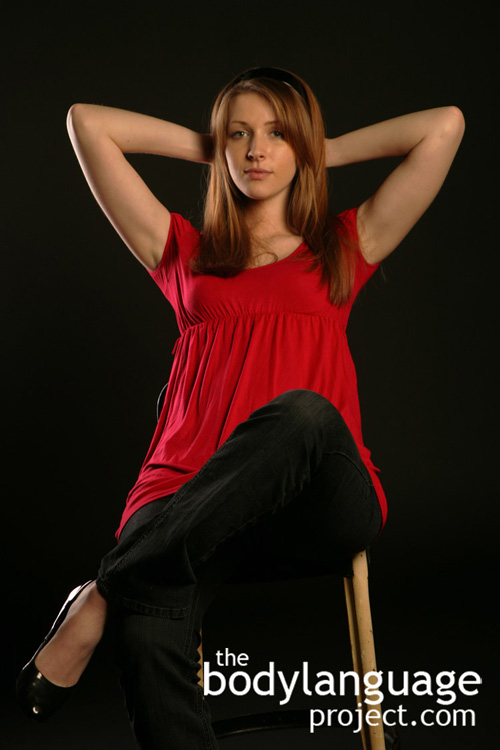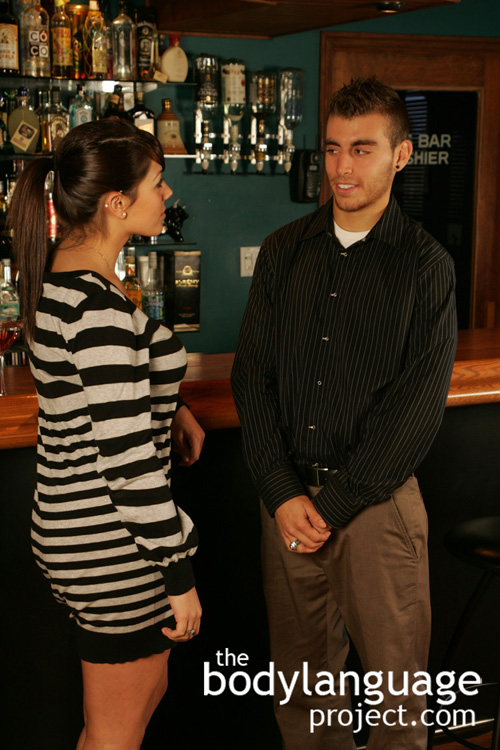
Women prefer men with square jaws as it indicates the level of testosterone and hence aggression/ambition they might hold.
Men and women display similarly in terms of body language, but there are some key differences when it comes to what women find attractive in men, versus what men find attractive in women. Men seek women that are submissive and willing to heed their dominance, whereas women seek men who are dominant and able to lead them. This is a general rule of course, and as we know there are exceptions to every rule, but if we are appealing to the majority of the people, which is my goal, than these generalities are adequate. Women seek out men that have the ability to gain access to resources such as food and shelter, who are protectors to them now, and in the future their offspring, and who have the physical traits they think indicate these skills such as health, vigor, and sexually virility.
Men give up plenty of cues to their virility, one of which is a tight round buttocks and lack of stomach fat. Men with round bums have been shown to be in better health and to maintain that health throughout their lifetimes. Health reports show that men who add fat to their midsection are much more prone to disease. Women also seek men with broad strong shoulders, square jaws, muscular arms and chests. Individual differences still exist as it relates to other features, for some women a hairy chest or facial hair is everything, while for others clean shaven is a must. However, nearly everyone agrees that hairy backs rank pretty low!
On average, women prefer men with more dominant features than those with submissive features. Depending on their intent however, they may at times prefer men who are more ‘feminine’ or sexier, and this is called the ‘sexy son’ theory. The theory says that women will choose men who are “pretty” based on looks alone, especially when they what to engage in risky one-night-stands. When they seek men as full time partners, on the other hand, they look for middle-of-the-road or “softer” men, in other words, ‘family-men’, since they figure they’ll be able to secure long term care in child rearing. Evolution favours both conditions where women who have random sex with “sexy fathers” so they in turn have “sexy sons” as well as women who seek out family-men who will stick around to raise families with them. In the “sexy son” scenario, the father passes on his genes to his son, but pays no, or very little effort in child care especially when compared to the family-man. The sexy-father might stick around for a few years but he’s usually distracted through proposition from other easy women – due to his sexiness he gets a lot of offers after all! This is balanced though because, while the mother is stuck raising a son on her own, he will grow up to have more or a similar number of offspring himself as will a family man. This trade-off produces more, or an equal number of children overall when compared to the family-man, making both successful strategies. We define successful in terms of making the genes for the behaviour more common or more popular. In evolutionary terms, popular genes are good genes no matter what morals are behind the behaviour. The genes merely wish, if they had wishes, to remain in existence.
Research tells us that men who are middle road are much less likely to stray primarily because they get fewer outside offers from women. Women who are married or in committed relationships, are more likely to cheat with men who are better looking than the average, and men who are better looking on average have more sexual relationships in their lifetime and also tend to cheat more often. A large part of this is intended to be background knowledge because it obviously doesn’t deal directly with nonverbal body language, however, it does play into the subconscious aspects and is important to frame how I view sexual body language. As always, you are welcome to disagree with my postulates and those of the scientific community, and in reality, won’t change the hidden meaning of the signals. It is my contention that knowing the ‘how’ and the ‘why’ of behaviours really give us predictive powers. These powers, in turn, give us the ability to come into novel situations, with little or no prior knowledge and deduce likely conclusions.










